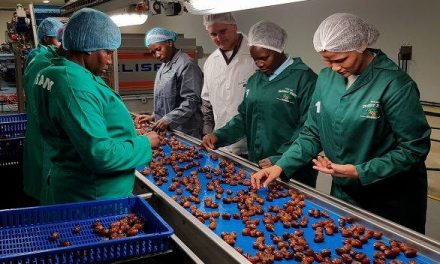
Local veggies take market by storm

During a crop assessment, members of the Agro-Marketing and Trade Agency determined that fresh produce crops this year will far exceed production levels of last year.
The top seven horticulture fresh produce crops are potatoes, onions, cabbages, carrots, green peppers, tomatoes and sweet potatoes. According to the data collection and forecasts by the Namibian Agronomic Board, the expected production of cabbages stood at 1600 tonnes and 1265 tonnes for January 2015 and February 2015 respectively, while the actual production and average consumption was just 58 tonnes for both comparative months in 2014. While the production and consumption volumes for cabbage remained comparatively low, about 58 tonnes were imported during the same months of the previous year.
The same trends are evident for the production of tomatoes, carrots, sweet potatoes and green peppers. For all these commodities, expected local production in 2015 far exceeds the sourced tonnage from the previous year. Sweet potatoes needed to be imported to meet market demand during January 2014 and February 2014 while the expected local production for the same period in 2015 stands at below 80 tonnes and below 60 tonnes respectively. During January 2014, locally sourced sweet potatoes stood at just more than 5 tonnes with the average consumption of this commodity at 30 tonnes, 60 tonnes needed to be imported. In February 2014, local production rose to approximately 25 tonnes and import declined to approximately 35 tonnes. “The dramatic difference between the 2014 scenario and what we predict for the 2015 production season can be attributed to many different things,” commented Fidelis Mwazi, newly appointed Senior Manager: Market Promotion and Research at the Agro-Marketing and Trade Agency.
“During farmer visits throughout the country, we placed emphasis on the fact that Namibian producers are capable of growing crops that can replace the imports of many commodities. We communicated the Market Share Promotion [scheme] wherever and whenever we had the opportunity to both producers and traders,” he said.
The Namibian Market Share Promotion (MSP) currently stands at 41.5 % and is the threshold of how much all importers of fresh fruit and vegetables need to source locally before they are allowed import permits for horticulture fresh produce from outside Namibia.
During the third quarter of 2014, the actual MSP obtained was 52 %, which means that only 48 % of all horticulture fresh fruit and vegetable requirements needed to be imported. This remarkable achievement for the Namibian horticulture sector is largely attributed to the success of the Special Potato and Onion Scheme. The value of the national turnover for locally produced fresh horticulture produce for the same period was N$87million compared with N$55million for the same period in 2014, a considerable increase of N$32million.











































